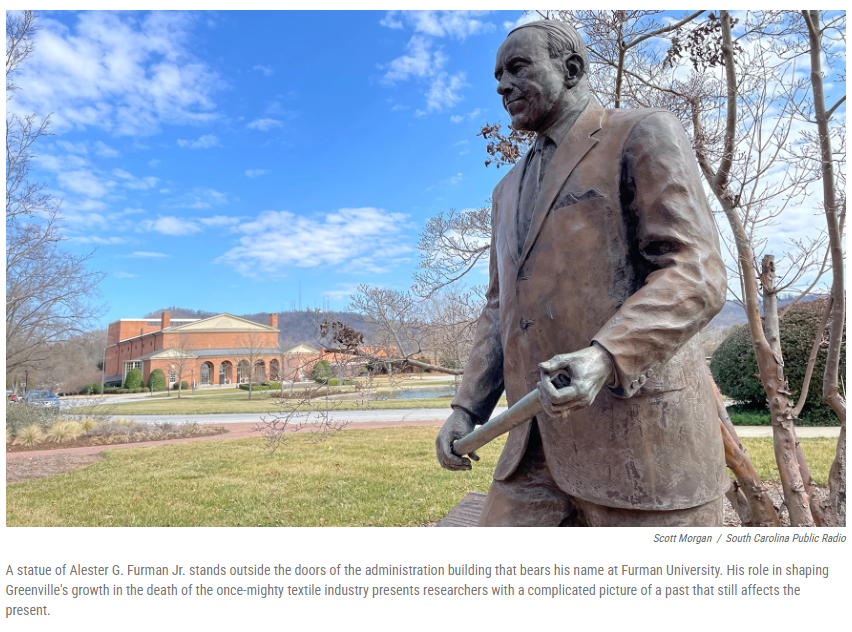As your horse-drawn carriage clip-clops along the sunny streets of Charleston, South Carolina, you can marvel at a perfect historic snapshot of the USA.
In the picture are grand antebellum mansions where visitors still leave calling cards on silver salvers; pastel-washed clapboard houses; gardens ablaze with subtropical colour; palm-lined boulevards fanned by sea breezes; and cobbled back alleys lit by gas lamps on balmy spring evenings.
But although often represented as such, Charleston is no museum. She is a living, breathing city whose surface charms are matched by depths and contrasts that make for an infinitely rewarding holiday.
You can buy the makings of a gourmet picnic at a traditional fromagerie and savour it on the beach, or admire the spirescape of the so-called Holy City from the decadence of a rooftop cocktail bar. You can take a walking tour of gastro-pubs or graveyards, and drive out of town to visit an 18th-century plantation or a Second World War aircraft carrier.
Charleston was the birthplace of the eponymous dance that symbolised the Roaring Twenties and the city has its own unique style of jazz, rooted in the gospel music of its many churches and still performed at bars such as High Cotton and the Charleston Grill. You can also enjoy an authentic Gospel Brunch at Halls Chophouse on Sunday.
But it was also the birthplace of the American Civil War. The ruins of Fort Sumter out in the harbour, where the first shots were fired, make a splendid excursion.
The city is home to Rainbow Row, one of the most picture-perfect Georgian terraces in the USA. But it was also the setting for Catfish Row, haunt of the penniless protagonists in Porgy and Bess (whose author, DuBose Heyward, is buried in the serene graveyard of St Philip’s Church).
Charleston’s charm is due in equal measure to luck and judgment. A post-Civil War slump left residents too poor to replace their peeling homes; but the city’s founding fathers were the first in America to adopt a grid layout of broad streets and their descendants were the first to ban high-rise blocks from the city centre.
Consequently the skyline is still dominated by the spires and towers of the city’s many churches, the product of a religious tolerance that earned Charleston the grateful sobriquet of the Holy City. An air of friendly tolerance persists to this day, and for three years running Charleston has been voted number one USA city in Condé Nast Traveller’s Readers’ Choice Awards for its friendliness, atmosphere and culture.
Nowhere will you find a warmer welcome than in Charleston’s myriad eating establishments, whether you order traditional shrimp and grits (creamy maize porridge) at Hominy Grill; fried chicken at Martha Lou’s Kitchen; an inventive sandwich at Butcher & Bee; a craft beer at the Kudu café; a maple and bacon doughnut at Glazed Gourmet Doughnuts; or fried catfish po’boy with green tomato chow chow at Husk, named best new restaurant in America in 2011 by Bon Appétit magazine.
Located in a beautiful, balconied 19th-century house, Husk is typical of the city’s gift for innovation without disruption. Its founder, elite chef Sean Brock, came to town intent on culinary revolution. Soon, however, he found himself thumbing old Carolina recipe books and hunting down seeds of long-forgotten vegetable varieties.
In recent years Charleston has become a renowned centre for “Lowcountry” cuisine – a mix of English, French, Mediterranean, Caribbean and West African influences – and a dedication to locally-sourced farm produce and seafood now pervades the city.
Although given a facelift in recent years the City Market is one of the USA’s oldest, four blocks long and home to almost 300 traders peddling everything from candy to jewellery. It’s the place to buy that time-honoured Charleston souvenir, a woven sweetgrass basket – part of the thriving Gullah culture, a relic of the West African slave trade.
In King Street, the city’s main thoroughfare, traditional buildings have been lovingly converted into shops. Divided into three distinct areas – design and dining, fashion, and antiques – King Street mixes big brands with local businesses specialising in anything from seersucker suits and repp bow ties to needlepoint kits and antique cookbooks.
Many of Charleston’s grander houses can be visited, including the Nathaniel Russell House with its remarkable wooden staircase, and the Aiken-Rhett House – one of the most complete urban antebellum complexes in the USA.
The Gibbes Museum of Art houses more than 10,000 locally significant artworks as well as visiting exhibitions, and the Old Slave Mart Museum tells the story of the estimated 300,000 slaves who passed through Charleston.
The Ashley River Road leads to several preserved plantation estates including the tourist-friendly Magnolia Plantation and Gardens and grand Middleton Place, which boasts America’s oldest landscaped gardens.
For a complete contrast, the Patriots Point Naval & Maritime Museum in nearby Mount Pleasant features a complete aircraft carrier, USS Yorktown, along with a submarine, a destroyer and numerous warplanes.
Spring is an excellent time to visit Charleston, with average temperatures of warm-but-not-hot and gardens heady with the scent of azalea, wisteria and Carolina jasmine. It’s also the time of the Spoleto Festival USA (May 23-June 8, 2014), one of country’s premier celebrations of live music and drama; this year’s programme ranges from Beethoven and Janacek to Michael Nyman and South African dance theatre.
If you fancy a break from history and culture, there are five fine beaches that fringe the barrier islands just south of the city. Each has its own character, from Folly Beach, playground of surfers and dolphins, and family-friendly Isle of Palms, to Kiawah Island with its championship-class golf course.
You can also charter a yacht to explore the coastline or fish, hire a kayak and look for herons in the creeks of the Ashley River, or go pelican-watching from the fishing port of Shem Creek.
But wherever you go, Charleston will always call you back.



